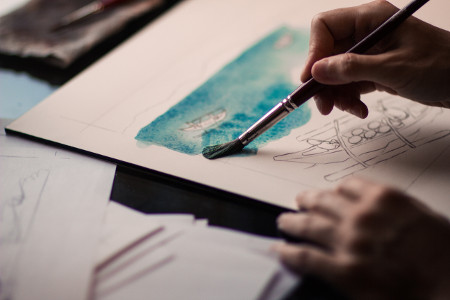
Smart Materials and Structures
Smart materials and Structures
Course code : MST19E31 Department : Materials Science
Course title : Smart Materials and Structures Credits : 3
Course Type : Elective Slot :
Instructor(s) : Dr. Srinivasan Sampath Credit pattern (L: T: P): (3:0:0)
1. Specific objectives: Gaining knowledge in the field of smart materials based on supramolecular interactions via noncovalent bonding. Materials with tunable surface wettability, self-assembly of small molecules, drug delivery and nanomaterial for various application will be covered.
2. Learning outcomes:
The purpose of this course is to introduce the upcoming and very important filed of Supramolecular chemistry/polymer to the students. Students may learn about the design and synthesis of new smart materials for various applications in emerging field.
3. Pre-requisite Courses: Open
4. Syllabus:
Unit-1: (No. of Lectures: 9)
Introduction to Smart materials and Structures. Definition and examples of intermolecular forces present in supramolecular materials. Superhydrophobic, superhydrophilic, superoliophobic, superoliophilic surfaces. Smart surfaces with hierarchical micro and nano structures for special and switchable wettability. Self-cleaning coatings, Lotus effect, butterfly effect, Gecko leg and water strider leg structure for special wettability. Design of new materials with stimuli responsive surfaces.
Unit-2: (No. of Lectures: 9)
Self-assembly processes in organic materials. Definition, design and synthetic strategies of Catenanes, rotaxanes, pseudorotaxanes. Main supramolecular forces involved in such assemblies. Self-assembly processes in metal-containing compounds. Self-assembly of metal nanoparticles (via H-bonding and electrostatic forces). Application of coordination bonds in the preparation of large supramolecular assembled materials such as Cages, macrocycles and catenanes.
Unit-3: (No. of Lectures: 9)
Polymeric materials and grids. Nano-capsules and containers. Discussion of main synthetic strategies for their preparation. Examples of each type. Potential uses of such assemblies as nano-reactors and for transport (e.g. drug-delivery).
Unit-4: (No. of Lectures: 9)
Molecular switches and machines. Use of supramolecular forces to assemble components that respond (on-off) to external stimuli. Molecular-shuttles, Molecular-abacus and Molecular-muscles, Molecular-elevator. Assembling such components into surfaces for molecular electronics. Supramolecular interaction of polymeric materials in the solid state. Self-assembled monolayers. Molecularly imprinted polymers.
Unit-5: (No. of Lectures: 9)
Soft smart hybrid materials based on Carbon nanotubes, Graphene oxide, graphene, fullerene, organogels, hydrogels, ionic liquid gels. Preparation, characterization and application of these hybrid materials using various spectroscopic and microscopic techniques.
5. Uniqueness of the course:
This course is designed as basic course for the students who are interested in learning about the supramolecular polymers/chemistry and novel features of smart materials and design.
6. Text/ Reference Books:
1) Supramolecular chemistry : fundamentals and applications : advanced textbook, Publisher: Heidelberg : Springer, 2006
2) Supramolecular Chemistry –Fundamentals and Applications, Katsuhiko Ariga and Toyoki Kunitake, Springer, 2006, ISBN-10 3-540-01298-2 Springer Berlin Heidelberg New York
ISBN-13 978-3-540-01298-6 Springer Berlin Heidelberg New York, 2006, DOI: 10.1007/b84082
3) Advanced Textbook Lehn, J.-M. (1995) Supramolecular Chemistry. Wiley-VCH. ISBN 978-3-527-29311-7.
4) Jerry L. Atwood, Jonathan W. Steed (2, eds.) (2017) Supramolecular Chemistry: From Molecules to Nanomaterials. Wiley. ISBN 978-0-470-74640-0
5)Supramolecular Soft Matter: Applications in Materials and Organic Electronics: Interaction of carbon nanotubes and small molecules. Publisher: John Wiley & Sons, Inc. 2011, 381-406. Print ISBN: 9780470559741 Online ISBN: 9781118095331.
S. Srinivasan, A. Ajayaghosh.
7. Learning materials:
1) Beauty in Chemistry, Artistry in the Creation of New Molecules, Editor-Luigi Fabbrizzi, The Mechanical Bond: A Work of Art, by Carson J. Bruns and J. Fraser Stoddart, Publisher Springer, Berlin, Heidelberg, 2012.
2) Balzani, V.; Gómez-López, M.; Stoddart, J. F. (1998). "Molecular Machines". Accounts of Chemical Research. 31 (7): 405–414. doi:10.1021/ar970340y
8. E-materials:
1) Lehn, J. M. (1990). "Perspectives in Supramolecular Chemistry—From Molecular Recognition towards Molecular Information Processing and Self-Organization". Angewandte Chemie International Edition in English. 29 (11): 1304–1319. doi:10.1002/anie.199013041.
2) Ikeda, T.; Stoddart, J. F. (2008). "Electrochromic materials using mechanically interlocked molecules". Science and Technology of Advanced Materials. 9: 014104., doi:10.1088/1468-6996/9/1/014104.
3) http://www.oxkstu.ru/download/Ariga_K_Supramolecular_Chemistry_-_Fundamentals_and_Applications.pdf
9. Assignments: Assignment sets, seminars on advanced topics will be assigned
10. Evaluation /Grade Policy: As per the norms of CUTN.
|
Components |
Weightage (%) |
|
Internals 1, II & III |
25 |
|
Assignments |
05 |
|
Seminars |
05 |
|
Attendance |
05 |
|
End Semester Exams |
60 |